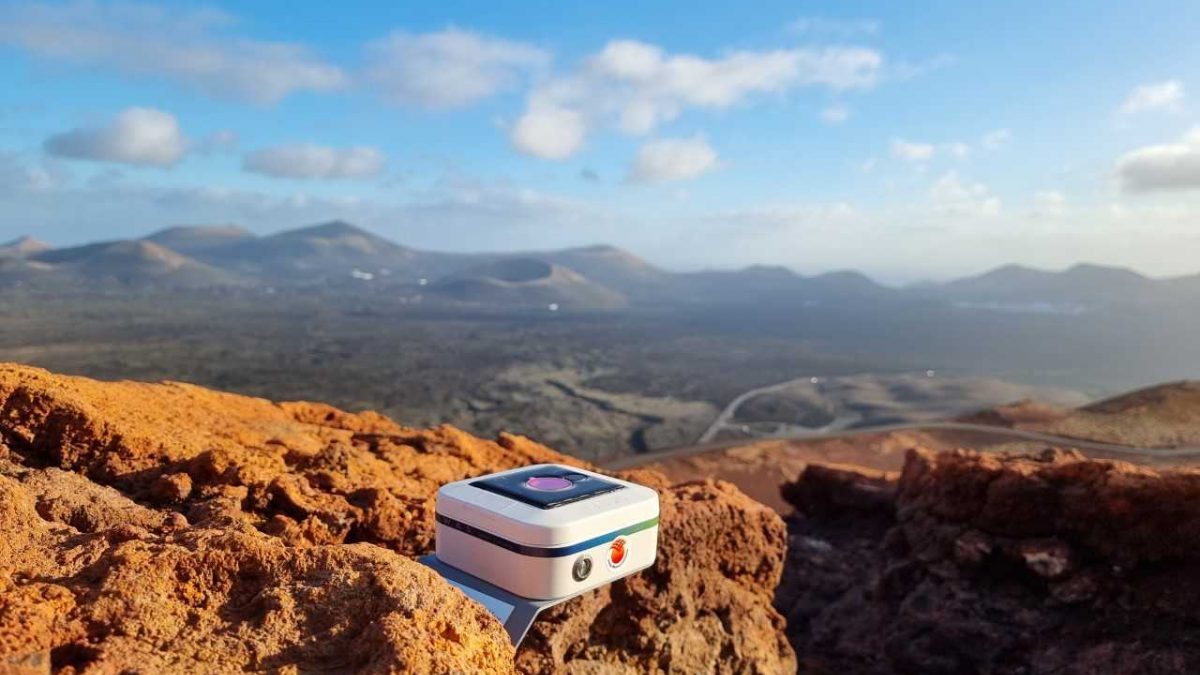The Department of Ecological Transition, Fight against Climate Change and Territorial Planning of the Canary Islands Government, in collaboration with the Institute of Astrophysics of the Canary Islands, has completed the installation of a network of photometers in the Timanfaya National Park, which will allow data collection and measurement of light pollution levels in this natural space.
The councillor responsible for the area, José Antonio Valbuena, stresses that the initiative is part of the Interreg EElabs project, which carries out this type of measurements in protected natural areas of Macaronesia, and that it will allow, in the case of the island of Lanzarote, to measure the propagation of artificial light at night from urban centres over this protected area, in order to assess its impact on the species that inhabit it.
José Antonio Valbuena also emphasises that the data collected by this project will be available to the scientific community on a portal for public use, creating a laboratory in the natural environment to measure the natural darkness in an area surrounded by the municipalities of Yaiza and Tinajo.
The photometers nnetwork installed thanks to this project, coordinated by the IAC astronomer Miquel Serra-Ricart, will make it possible to measure the brightness of the night sky, as well as the changes produced by the light pollution of nearby towns, detecting the effect that this may have on the numerous species of lichen and plants, insects and birds, including one of the most important colonies of Cory’s shearwater in the region, with an estimated population of between 1,350 and 1,450 pairs of the Atlantic species.
In the latter case, due to their nocturnal behaviour, they are very sensitive to light, especially when the juveniles venture out on their first flights, between October and November. On those nights, city lights attract them, dazzling and disorienting them, causing them to fall to the ground and leaving them vulnerable to predators.
For his part, the director-conservator of the Timanfaya National Park, Pascual Gil Muñoz, stresses that “in addition to the landscape, geology and biodiversity, this natural area has other less tangible but no less important natural resources, such as the quality of the air and sky, the darkness and silence”. For these reasons, he stresses that “over the next few years we want to focus on these resources and monitor them, not only for their influence on the health of the species and ecosystems, but also for the people who visit us”.
For these reasons, José Antonio Valbuena stresses that the study aims to generate the necessary data to promote the protection of these species from the effects that nocturnal light pollution may have on them.
EELabs (eelabs.eu) is a project funded by the INTERREG V-A MAC 2014-2020 Programme, co-financed by the ERDF (European Regional Development Fund) of the European Union, under contract number MAC2/4.6d/238. EELabs involves five Macaronesian centres (IAC, ITER, UPGC, SPEA-Azores, SPEA-Madeira).
The objective of EELabs is to create Laboratories to measure the Energy Efficiency of Artificial Night Light in protected natural areas of Macaronesia (Canary Islands, Madeira and Azores). STARS4ALL was a project funded by the European Union H2020-ICT-2015-688135.
This article was originally published by the Government of the Canary Islands: “Transición Ecológica instala medidores de luminosidad en el Parque Nacional de Timanfaya para proteger fauna“

